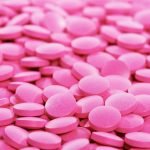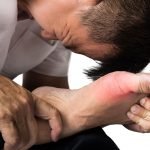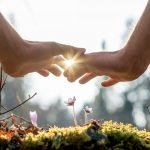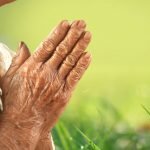Basal Cell & Squamous Cell CA: Individualized Naturopathic Care
Robin DiPasquale, ND, RH (AHG)
ADC is a 59-year-old woman with a 3×4 cm scaly lesion on her lower right arm that has been there for the past 10 years. A dermatologist diagnosed it as actinic keratosis. More recently, during a visit with a rheumatologist, a biopsy was taken, which surprisingly came back as SCC. ADC was referred for Mohs surgery to have the lesion removed. In her case, there was no family history of skin cancer, she is of Italian descent, exercises regularly, has restorative and adequate sleep, a very clean diet, and regularly takes nutritional supplements and herbal remedies. Her life is a bit stressful, which can cause digestive disruption. ADC has a history of sun worshipping (that goes back to her teen years) and extensive tanning during the warmer months. She recently developed several vitiligo patches on her torso. JR is a 45-year-old man who loves golf. He grew up playing golf, went to college on a golf scholarship, worked as a professional golfer, and now coaches golf for a local college in his area. He is outside on the golf course almost daily from March through October. JR doesn’t wear a hat, often forgets sunscreen, and doesn’t think about clothing that can protect him from the sun. He was recently diagnosed with squamous cell carcinoma (SCC) on the right cheek, and is scheduled for Mohs surgery to have it removed. He also has a few “suspicious” looking areas on both ears, which will be evaluated following the surgery. JR reports a family history of 1 brother, his father, and his maternal grandmother (all of northern European descent), having all undergone Mohs surgery for SCC. He also reported a significant history of mononucleosis, and recently tested with high titers of Epstein Barr virus (EBV) antibodies.
LC is a 65-year-old male of full Irish descent. He has spent his working career indoors, with occasional weekend outings in nature. He has very fair skin, and has had to take extra precautions with sun protection. Several skin lesions on his forehead, and the area of his head where the hairline is receding, have recently been diagnosed as basal cell carcinoma (BCC). LC has been referred for Mohs surgery to have them removed. Wound healing may be complicated because he has non-insulin-dependent diabetes mellitus (NIDDM).
Besides receiving a diagnosis of skin cancer and being sent to Mohs surgery for removal of the lesion, there is 1 blatant factor that all 3 of these cases have in common. Because these were SCC or BCC, none of the patients were advised by the dermatologist or the surgeon to have any concern other than the diagnosis of skin cancer. “The Mohs surgery will get it all,” they were told, “and once the lesion is healed, you can go about your life as before, with added sun protection and a skin check in 1 year.” They were not given any plan to help the body support the removal of the cancer lesion through surgery, and they were not given a plan for helping to prevent a recurrence. This is where naturopathic medicine has a significant role to play.
Skin Cancer – Stats & Risk Factors
One in 5 North Americans will develop skin cancer in their lifetime.1 Each year, there are more new cases of skin cancer than the combined incidence of cancers of the breast, prostate, lung and colon.2 Of these, 97% will be non-melanoma cancers with high cure rates.3
Basal cell carcinoma is cancer of non-keratinized cells. Risk for extensive spread is high when the lesion is on the nose, cheek, eyelid, or temple, and is higher for men with BCC.3 Squamous cell carcinoma is cancer of keratinizing cells. Compared to BCC, SCC has more potential for anaplasia, rapid growth, local invasion, and, if neglected, metastasis.3
About 90% of non-melanoma skin cancers are associated with exposure to ultraviolet (UV) radiation from the sun.4 UV-A, which can penetrate through glass, destroys vitamin D and causes DNA mutations, and is not blocked by most sunscreens. UV-B, which does not penetrate through glass, initiates vitamin D synthesis in the skin, does not strongly promote DNA mutations, and is blocked by sunscreen.5 Based on this understanding, the heavy use of sunscreen actually blocks the synthesis of vitamin D, which is needed to protect against skin cancer. A more effective approach would be to allow the skin to have gradual light exposure to early morning sun, then to cover up with hats and long sleeves and pants during the 10 AM-4 PM time period when UV radiation can cause damage. This way, one can build up the skin coloring needed to provide natural protection.
Caucasians have the highest rates of skin cancers.6 Darker pigmented skin in some ethnic groups may provide some protection, as suggested by these statistics. Skin cancer represents 2-4% of all cancers in Asians, and 1-2% of all cancers in Blacks and Asian Indians.7 People with darker skin, however, may be diagnosed later, resulting in more advanced cases that can be fatal.7 BCC is the most common skin cancer in Caucasians, Hispanics, Chinese Asians, and Japanese Asians, whereas SCC is the most common skin cancer among Blacks and Asian Indians.7
An underassessed contributing factor to the development of skin cancer is the role of viruses. It is important to evaluate viral history in any patient who is diagnosed with skin cancer. Human papillomavirus (HPV) has been linked to increased incidence of SCC.8 HPV can amplify sun sensitivity. Cytomegalovirus (CMV) has also be associated with non-melanoma skin cancer development.9 Although I could not find a citation implicating EBV, this showed up strongly as a possible contributing factor in JR’s case. When viruses are implicated, homeopathic nosodes may be considered as part of the treatment protocol.
Naturopathic Approach to Skin Cancer
For naturopathic support, we want to look at both topical and internal treatment options for regeneration and reversal of skin damage. Even if the skin cancer lesion is being removed, application to the area surrounding the resulting scar is important. There are many brand-name creams, lotions, and ointments available for topical treatment, many of which contain the appropriate antioxidant and inflammation-modulating actions.
The nutrients required for topical healing can be mixed into any base. Rose hip seed oil, grape seed oil, and sea buckthorn oil all act as excellent bases, as they themselves bear these healing properties. Nutrients to mix in could including liquid or powder forms of the antioxidant vitamins A, C, E, D3, the minerals selenomethionine and zinc, methylsulfonylmethane (MSM), alpha-lipoic acid, coenzyme Q10 (CoQ10), the herbs Camellia sinensis, Curcuma longa, Centella asiatica, Rosmarinus officinalis, Calendula officinalis, Salvia officinalis, Vitis vinifera, resveratrol powder, pomegranate, or any of the touted high-ORAC-scoring berries.
Betulinic acid inhibits topoisomerase, thus enhancing apoptosis, and is also anti-viral and inflammation-modulating through the inhibition of nuclear factor-kappa B (NFĸB). Betulinic acid is found in Birch trees, whose sap that runs in the spring is used as a blood cleansing detox agent. The gemmo of Betula pubescens can be added directly to a topical base and applied to the skin. Betulinic acid is also found in the chaga mushroom, Inonotus obliquus. Many other plants contain various levels of betulinic acid, including Arbutus menziesii, Melaleuca leucadendron, Ziziphus jujuba, Syzygium claviflorum, Rosmarinus officinalis, Salvia officinalis and S sclerea, and Quercus suber.10
Castor oil with pre-emulsified vitamin E, or a niacin-based cream, has been recommended topically for precancerous skin lesions.3
For smaller suspicious lesions that are not going to be treated by surgical removal, tincture of Sanguinaria canadensis can be applied topically, 1-2 gtt directly on the lesion BID. If the location allows, the drops could instead be applied to a Band-aid and placed over the lesion, and changed BID. The lesion will begin to shrivel, dry up, and eventually fall off. Treatment is continued for weeks, and generally doesn’t irritate the healthy skin around the lesion.
From my perspective, internal treatment for BCC and SCC is necessary, even if the lesion is going to be removed surgically. If surgical removal is chosen, it is important to recommend modified citrus pectin, to halt any cancer cell spread and inhibit growth. And, of course, homeopathic Arnica is recommended post-surgically.
Immune Modulation
Immune-stimulating or -modulating herbs to consider are Astragalus membranaceus, Andrographis paniculata, Echinacea spp, and many of the medicinal mushrooms, including Ganoderma lucidum (lingzhi or reishi), Grifola frondosa (maitake), Lentinula edodes (shiitake), Cordyceps militaris, as well as Cannabis (hemp), and vitamin D3.
Antioxidant Activity
Antioxidant activity is crucial, and internal use of nutrients with this activity will allow for dispersion throughout the whole body. Vitamins A, C, and E, plus selenium and zinc, all from quality foods and supplements, should constitute the foundation. Cod liver oil contains omega-3 fatty acids, as well as vitamins A and D. Additional nutrients to consider include alpha-lipoic acid and CoQ10.
Supplements derived from the seeds of many fruits provide cell rejuvenation action. An array of berries in the diet – blackberries, blueberries, raspberries, cranberries, mulberries, strawberries, cherries, and currants – can be augmented by the superfood, high-ORAC berries like goji, acai, aronia, and the most recently discovered Chilean maqui berry. And don’t forget to encourage patients to eat the “rainbow,” ie, purple, blue, green, yellow, orange, and red vegetables. Onions and apples will provide quercetin.
Inflammation Modulation
Inflammation equals heat. Inflammation-modulating support will help clear heat and eliminate toxins. Controlling inflammation is one of the key aspects of cancer treatment.
Some primary inflammation-modulating herbs to consider are Curcuma longa (inhibits COX-2), Boswellia serrata (inhibits 5-HETE eicosanoids and LOX-5), and quercetin; all combine with bromelain for better absorption. Scutellaria baicalensis, Isatis tinctoria (Ban Lan Gen), and Zingiber officinale may also be considered, along with omega-3 fatty acids – supplemented and in the diet. The inclusion of some source of betulinic acid can also be helpful for modulating inflammation. The gemmo of Betula pubescens would be well indicated for 3-6 months.
Stress Management & Adaptogens
Along with immune-stimulation/modulation, antioxidant activity, and inflammation modulation, managing stress is essential, but even more so when the issue is cancer.
Besides changing someone’s lifestyle, which many are not willing to do, adaptogen herbs can be incorporated, with daily morning and noon dosing. The many ginsengs are well regarded, including American ginseng (Panax quinquefolius), Asian ginseng (Panax ginseng), Siberian ginseng (Eleutherococcus senticosus), Indian ginseng (Withania somnifera), and Russian ginseng (Rhodiola rosea). Ocimum sanctum (holy basil) can be added in as a tincture, tablet/capsule, or a refreshing daily tea.
Patients’ Treatment Programs
JR’s Protocol
This individual patient asked for a plan that would be manageable, with not too many things to take too many times a day. Priorities included preparing for the surgery, enhancing immunity, modulating inflammation, and providing anti-viral action against the EBV. We agreed to review after 1 month, to modify the plan.
- A mushroom combination, 5 caps BID for 1 month before surgery, then decrease to 2 caps BID after surgery
- Vitamin D3, 10 000 IU/day for the next month or longer, then consider having vitamin D levels tested
- A supplement containing multi-fruit seed powder, Cordyceps sinensis, and Panax quinquefolius, to support cellular metabolism
- Scutellaria baicalensis tincture, for inflammation modulation
- A probiotic containing L acidophilus and B bifidum, for gut biome balance, immunity
- Tamarix gallica gemmo, for anti-viral action
- EBV homeopathic nosode, 6X, 3C, 9C, 30C low-potency chords
- Sanguinaria canadensis tincture, topically over lesions
- Foods: Lots of carotenoids and anthocyanadin flavonoids (being sure to include orange, yellow, red, blue) – sweet potatoes, squash, blueberries, raspberries, cherries, etc
- Green tea daily
- Fractionated citrus pectin, 1 week before the surgery, and then 2 weeks after the surgery
- Arnica 1M, immediately after surgery, and for 3 additional days
After the lesion is closed, an herbal formula containing rose hip seed oil, mugwort, sage, Helichrysum, lavender, and foraha (tamanu) oil, applied topically over the scar to enhance healing
ADC’s Protocol
In this individual patient, the lesion was relatively large, so wound healing was a priority, as well as gut healing, due to the autoimmunity signs. Stress management, antioxidant support, and inflammation modulation were also important.
Fractionated citrus pectin, 1 week before the surgery, and then for 2 weeks after the surgery
- Arnica 1M, immediately after surgery and for 3 additional days
- Wound healing tincture: Calendula officinalis, Centella asiatica, Hypericum perforatum, Achillea millefolium, Symphytum officinale, Zingiber officinale
- Gemmo remedies: Ficus carica and Juglans regia, for gut healing
- Gemmo remedy, Quercus robur, and tincture of Ocimum sanctum, for adrenal support
- Andrographis paniculata, for immune modulation
- Mixed tocopherols, CoQ10, rooibos tea, and honeybush tea, for antioxidant support
- Vitamin D3, for immune support, etc
- Curcuma longa, for inflammation modulation
- Multi-fruit seed powder, for cellular metabolism and antioxidant action
- Probiotics, L acidophilus and B bifidum, for gut microbiome and immune support
- Topical rose hip seed oil, jojoba oil, argon oil, rose essential oil, and Helichrysum essential oil, to support scar healing
LC’s Protocol
For this individual patient, because of the NIDDM, wound healing was thought to require extra support. Inflammation modulation and immune support were also important.
- Herbal/nutritional formula for managing the NIDDM, containing Gymnema sylvestre, Cinnamomum cassia, alpha-lipoic acid, chromium, and vanadium
- Berberine (Mahonia spp, Coptis chinensis, Berberis vulgaris), for blood sugar management and gut biome support
- Fractionated citrus pectin, 1 week before the surgery, and then for 2 weeks after the surgery
- Arnica 1M, immediately after surgery, and for 3 additional days
- Tincture of Astragalus membranaceus, Eleutherococcus senticosus, Calendula officinalis, Glycyrrhiza glabra, for immune support and wound healing
- Saccharomyces boulardii, for gut dysbiosis repair
- Gemmo remedy, Cedrus libani, for gut dysbiosis repair
- Gemmo remedy, Betula pubescens (source of betulinic acid), for inflammation modulation
- Vitamin D3, for immune support, etc
- CoQ10, for antioxidant support
- Silybum marianum, for liver support and indirect immune support
- Curcuma longa, for inflammation modulation
- Homeopathic Scorpion 200C (his constitutional remedy), to be re-dosed
Summary
In patients who have been diagnosed with SCC and BCC, naturopathic medicine can offer significant adjunctive care, enhancing the potential outcome of any conventional treatment. Educating patients that treatment involves more than just removing the lesion becomes extremely important, as it is generally being overlooked in the conventional skin cancer clinics. Individual protocols will facilitate treating the whole person, not just the cancer. Preventative medicine is critical to head off any reoccurrence. And stimulating the healing power of nature through good food, nutritional supplements, herbal and gemmo remedies, and homeopathy will allow for the Vis to strengthen and flourish.
as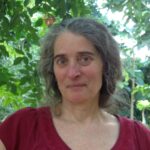 Robin DiPasquale, ND, RH (AHG), who has been practicing in the healing arts for over 30 years, is growing into one of the elders in the naturopathic medicine community. Dr DiPasquale served as faculty at Bastyr University for 15 years and returns yearly as a guest teacher. She practiced at Red Lotus Healing Arts and the UW Integrative Medicine Clinic in Madison, WI, for the past 8 years, and recently relocated to Fort Collins, CO. Her eclectic healing tools include homeopathy, biotherapeutic drainage, herbal medicine, gemmo therapy, cranial sacral and visceral manipulation. Robin is published and teaches internationally. Her current passion is the study and practice of Family Constellation Therapy.
Robin DiPasquale, ND, RH (AHG), who has been practicing in the healing arts for over 30 years, is growing into one of the elders in the naturopathic medicine community. Dr DiPasquale served as faculty at Bastyr University for 15 years and returns yearly as a guest teacher. She practiced at Red Lotus Healing Arts and the UW Integrative Medicine Clinic in Madison, WI, for the past 8 years, and recently relocated to Fort Collins, CO. Her eclectic healing tools include homeopathy, biotherapeutic drainage, herbal medicine, gemmo therapy, cranial sacral and visceral manipulation. Robin is published and teaches internationally. Her current passion is the study and practice of Family Constellation Therapy.
References
- Robinson JK. Sun exposure, sun protection, and vitamin D. JAMA. 2005;294(12):1541-1543.
- Cancer Facts and Figures 2016. American Cancer Society Web site. http://www.cancer.org/acs/groups/content/@research/documents/document/acspc-047079.pdf. Accessed March 15, 2016.
- McKinney N. Naturopathic Oncology: An Encyclopedic Guide for Patients & Physicans. 2nd ed. Vancouver, BC: Liaison Press; 2012.
- Koh HK, Geller AC, Miller DR, et al. Prevention and early detection strategies for melanoma and skin cancer: Current status. Arch Dermatol. 1996;132(4):436-442.
- Understanding UVA and UVB. May 24, 2013. Skin Cancer Foundation Web site. http://www.skincancer.org/prevention/uva-and-uvb/understanding-uva-and-uvb. Accessed March 15, 2016.
- Centers for Disease Control & Prevention. Skin Cancer Rates by Race and Ethnicity. Last updated August 20, 2015. CDC Web site. http://www.cdc.gov/cancer/skin/statistics/race.htm. Accessed March 15, 2016.
- Gohara M, Perez M. Skin Cancer and Skin of Color. May 6, 2009. Skin Cancer Foundation Web site. http://www.skincancer.org/prevention/skin-cancer-and-skin-of-color. Accessed March 15, 2016.
- Karagas MR, Nelson HH, Sehr P, et al. Human papillomavirus infection and incidence of squamous cell and basal cell carcinomas of the skin. J Natl Cancer Inst. 2006;98(6):389-395.
- Zafiropoulos A, Tsentelierou E, Billiri K, Spandidos DA. Human herpes viruses in non-melanoma skin cancers. Cancer Lett. 2003;198(1):77-81.
- Pai SR, Joshi RK. Distribution of betulinic acid in plant kingdom. Plant Science Today. 2014;1(3):103-107.


